Latitude: 59 26.555N Longitude: 167 47.581WLife on the Healy this Saturday was filled with strange happenings. It started at 3:24 in the morning with a resounding "Now. There's a major fuel leak in Engine Room One. All hands man your general emergency bills", piped throughout the ship. The instructions were to report to our emergency drill locations. What did I do? I promptly rolled over and went back to sleep. I realize that this doesn't speak well of my survival skills. At 3 am, though, it's got to be pretty major to wake me up. Apparently, this qualified as major for the rest of the ship. Thankfully, my roommates were more alert and pretty soon we were all assembled in the Science Conference Lounge awaiting instructions. Some people were noticeably worried. Others were just noticeably sleepy.
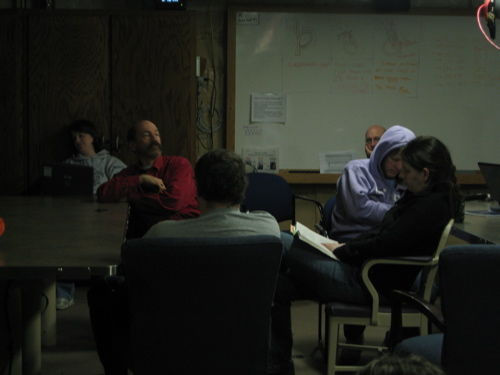
While I did have a fleeting thought about whether or not I would remember how to put on the "Gumby Suit", I felt like the situation probably wasn't cause for alarm. I must have been half asleep still. If I had been thinking correctly, I would have realized that the fine mist of diesel fuel that was spraying into the air in the engine room was highly volatile. I would have thought about the firefighters down there who were cleaning up 40 gallons of fuel from the floor. It might have crossed my mind that the watertight, airtight doors used to contain a fire on the boat would be useless if a resulting explosion tore part of the boat off. Luckily, none of this entered my sleepy brain as I sat reading my book and waiting to go back to bed an hour later. Luckily, it didn't matter that I was unalarmed. The Coast Guard crew was appropriately concerned and by the afternoon, all was restored back to normal. By that time, we were back on the ice.
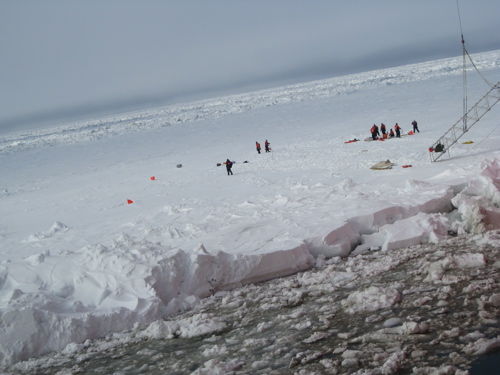
I had already planned to do ice-work with the ecology team, having been trained on their research stations earlier in the week. It turned out to be fortuitous that I had been. Sometime between the middle of the night drill at 3:30am and the ice briefing at 9:30am, Katrin (the leader of the team) broke her right thumb during a plankton tow. She was in the Sick Bay awaiting minor surgery as we prepared to descend the brow onto the nearly four-foot thick ice. What a change we had seen in the ice in 48 hours of travel! From ice so thin that the crew had trouble finding a stable stop for the research teams, to ice so thick that extensions had to be put on the augers to get through to the seawater! On top of this thick ice, there was up to 40 inches of snow. This made walking, especially with heavy equipment, an exercise in clumsiness!
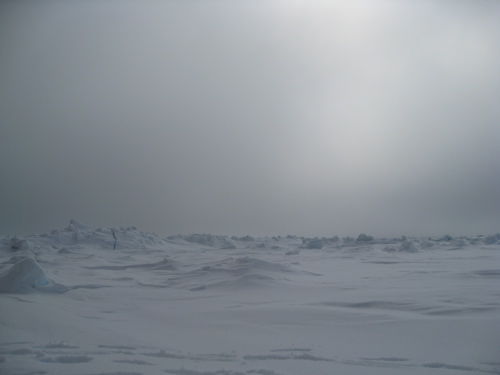
The dramatic day thankfully ended smoothly. Before firing up the propellers to move us to the next location, Jared and I deployed the VanVeen grabs to collect some sediment to complete the sampling for the day. As you can see in the picture below, the VanVeen contraption is like a giant sandbox scooper. This one is a very dangerous version. With enough pressure to cut careless fingers off, the "wings" of this instrument operate to swing the "jaws" shut- effectively scooping up a sample of benthic (sea-floor) sediment and delivering to the deck, ready for sampling.
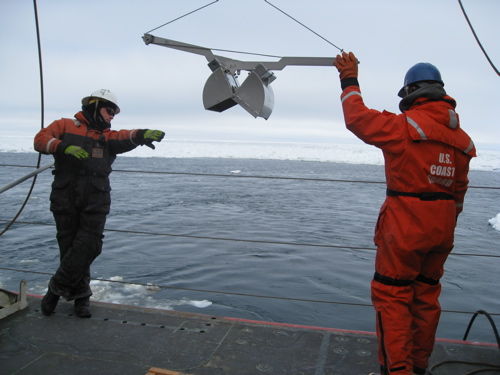
Samples of the mud are taken and tested for the presence of:
Particulate organic matter (What's alive down there?)
Fatty acids (What is there to eat?) and
chlorophyll (What kind of algae is there in the murky depths?)
Finally, the excess sediment is hosed off through a sieve and the remaining organic material is examined and categorized. Take a look at what we found in three "grabs"!
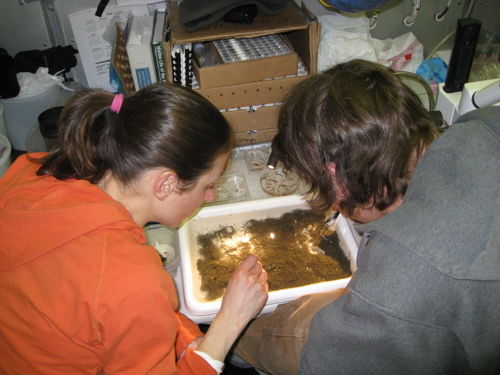
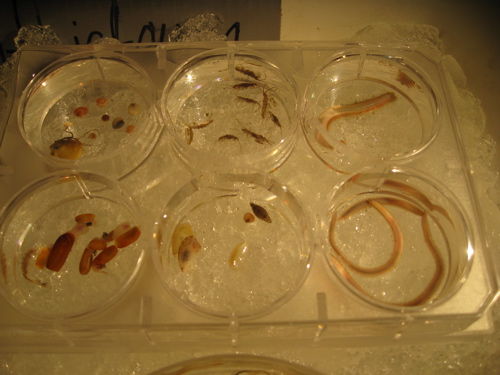
Sunday was less eventful which gave everyone a chance to catch-up on lab work, hit the gym or take a nap. Tomorrow's another day though...


Comments